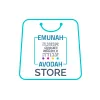The weekly Torah portion Hebrew: פָּרָשַׁת הַשָּׁבוּעַ Parashat HaShavua, popularly just parashah and also is a section of the Torah (Five Books of Moses) read in Jewish and Hebrew Roots/Messianic fellowships each week. The Sabbath readings are followed by a reading from the Haftarah from the Book of Prophets and for Hebrew Roots congregations, they also read a portion from the Brit Chadashah (New Testament).
There are 54 weekly parashiyot (plural) or parshahs and the full cycle is read over the course of one year.
Each weekly Torah portion takes its name from the first distinctive word in the Hebrew text of the portion in question, often from the first verse. Dating back to the time of the Babylonian captivity (6th century BCE), public Torah reading mostly followed an annual cycle beginning and ending on the holiday of Simchat Torah. However, during the 1st and 2nd centuries, the Torah readings were read over the course of three years. This is called the triennial cycle in reading the Torah portions.
Exploring the Hebrew Roots of the Faith Once Delivered
The Torah (Genesis through Deuteronomy) is the foundation of all Scripture. This being the case, an inadequate or erroneous understanding of the Torah makes it much more difficult to come to a proper understanding of the rest of the Hebrew Scriptures, not to mention the New Testament (which is also based on Torah). For this reason the Jewish sages devised a system for studying the Torah. According to ancient records, this practice was begun by Ezra (a Priest and Scribe) after the Jewish captives had returned from Babylon. During the time of Y’shua, (Jesus) two different cycles of reading were in use. One cycle was accomplished in one year’s time, the other took three years to complete.
~ Torah Reading Forbidden ~
During the reign of Antiochus Epiphanies (ruled from 175-164 BCE), the Jewish people were forbidden to read the Torah or to circumcise their children. Anyone caught doing so was put to death. Many were martyred because they circumcised their children. However, they managed to get around the prohibition concerning Torah reading in a very resourceful way.They set up a cycle of readings in the Nevi’im (The Prophets) which reminded them, in some way, of the Torah portion that was normally read that particular Sabbath. The connection might be a reference to a story found in the Torah reading or even a single word that reminded them of that week’s Torah passage (called a parasha in Hebrew). After reading this Torah substitute, one of the men would say;”Oh, that reminds me of the storyabout…,” and off they would go into a discussion about that week’s Torah portion without having broken the law against reading Torah. These portions from the Nevi’im became known as theHaftarah, which means “other readings.”
~ Yeshua Read the Haftarah ~
In Yeshua’s day it was customary (as it is today in orthodox synagogues) for both the weekly Torah and Haftarah portions of scripture to be read each Sabbath. This provided the basis for discussion by anyone who might want to comment upon them. It was also common to invite a distinguished guest to participate in the Torah or Haftarah readings and make whatever comments they deemed appropriate. This was the situation in which Yeshua found Himself when He visited his hometown of Nazareth, and went into the synagogue on the Sabbath day,as was His custom (Luke 4:16). The passage He was given to read is not found in the Haftarah readings. Isaiah 61:1-2 may have been removed by the Rabbinic Jews due to the great distress and persecution they had received at the hands of the followers of Jesus (the so-called Christians) over the centuries. The point is this: In the first century, Torah and Haftarah reading was common practice (as it is today),and was in fact the practice of Y’shua, who held to many of the traditions of the Torah observant Jewish people which did not contradict the Scriptures.The Brit Chadasha attests to the fact that He both attended and participated in synagogue service on the Sabbath day, as did the Apostle Paul.
~ The Torah Cycle ~
The common practice today is to read the entirety of the Torah, and the companion Haftarah scriptures, in a one year cycle. This cycle begins onthe first Sabbath after the Festival of Succoth (Feast of Tabernacles) with the very first reading which begins in Genesis 1:1. i.e., this weekend(Sabbath). Believers who are currently gathering in homes, or small fellowship groups, would do well to use the Torah readings as a basis for their Sabbath study. Many Jewish commentaries are available that can aid in this study.
Courtesy: Hebrew Roots magazine



Leave A Comment
You must be logged in to post a comment.